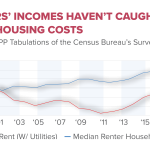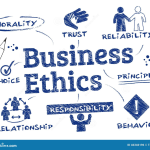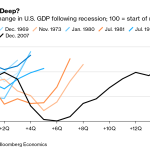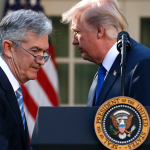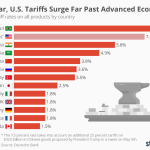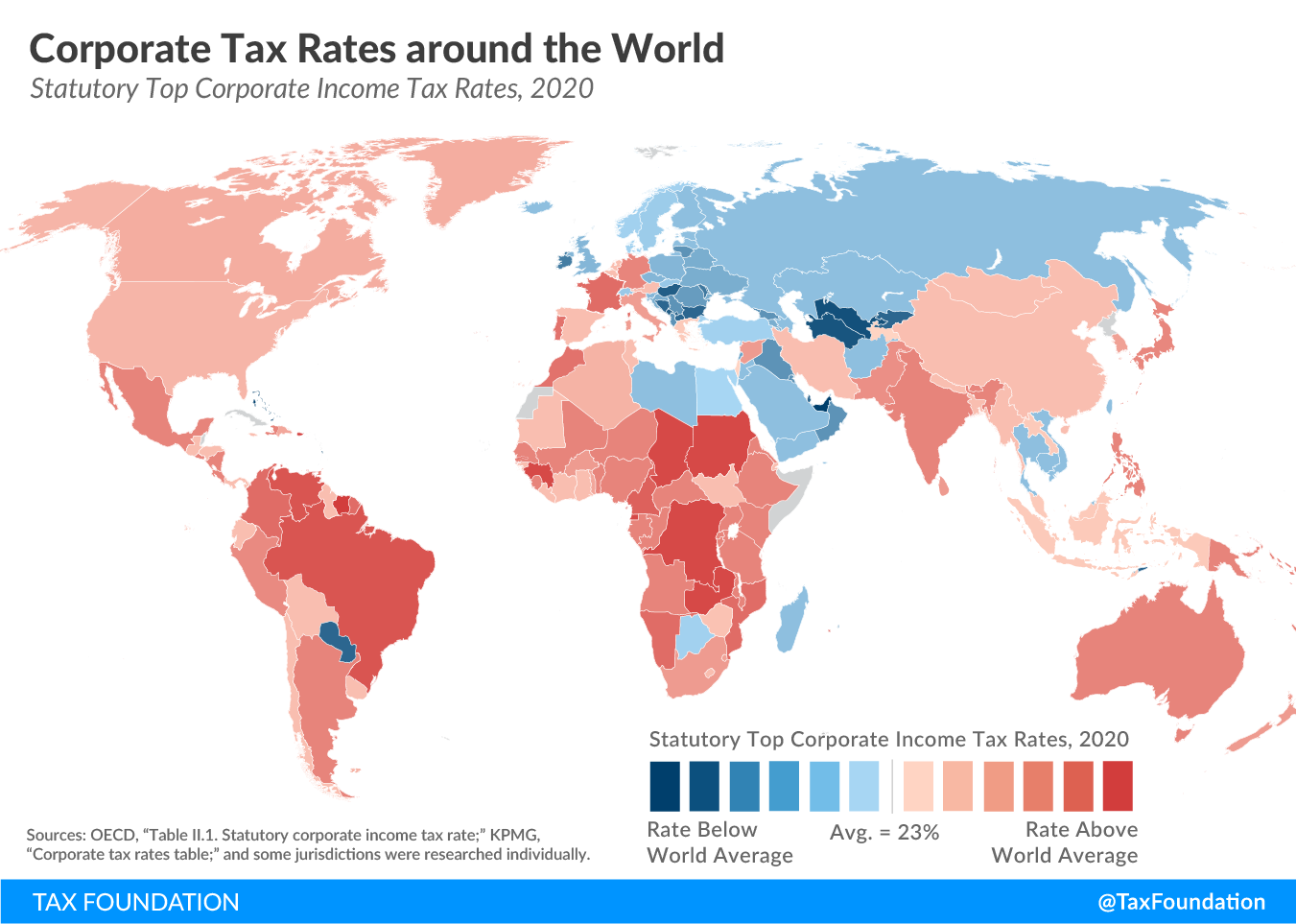Understanding corporate tax rates is crucial as Congress braces for a pivotal tax battle in 2025, marked by the impending expiration of significant provisions from the 2017 Tax Cuts and Jobs Act (TCJA). This law, a cornerstone of tax policy, introduced substantial corporate tax cuts aimed at stimulating business investment and economic growth. However, the effects of these tax cuts, analyzed by Harvard economist Gabriel Chodorow-Reich, reveal mixed results, sparking debates about their real impact on wages and revenue. As politicians on both sides leverage these findings in their campaigns, discerning the balance between maintaining competitive rates and generating sufficient tax revenue becomes more pressing than ever. Thus, navigating the intricate landscape of corporate taxation remains a pivotal issue for voters and policymakers alike, particularly as they evaluate past decisions and their ongoing implications for future economic health.
When examining the landscape of corporate taxation, one must consider various factors that influence business profitability and public finance. Terms like business tax rates, fiscal legislation, and economic incentives become pivotal in discussions surrounding the effects of past tax reforms such as the Tax Cuts and Jobs Act. Evolving market conditions and international competition constantly reshape the conversation, pushing lawmakers to scrutinize fiscal policies that either encourage or hinder corporate investments. As we delve into the motivations behind these tax policies, understanding alternative terms can enrich our perspective, revealing deeper insights into how corporate revenue structures function within today’s dynamic economic environment. This analysis invites a broader discussion about the sustainable pathways for enhancing economic growth while ensuring equitable tax contributions from corporations.
Understanding Corporate Tax Rates and Their Impacts
Corporate tax rates play a pivotal role in shaping the economic landscape of a country. The reductions incorporated in the 2017 Tax Cuts and Jobs Act (TCJA) not only transformed the statutory rate from 35% to 21% but were also presented as a catalyst for enhanced business investment. According to Harvard economist Gabriel Chodorow-Reich, while these cuts were intended to stimulate capital investment, the reality reflected in the data suggests a more nuanced outcome. The relationship between corporate tax policy and business behavior is complex, and although there was a reported increase in investment, the degree of change did not equate to the massive revenue losses anticipated by these cuts.
The argument around raising corporate tax rates finds support in the ongoing debate about the effectiveness of tax cuts. Advocates for increasing these rates argue that doing so could restore essential revenue streams that fund public services and initiatives. As Chodorow-Reich highlights, the data suggests that merely slashing taxes does not yield the promised benefits of immediate reinvestment into the economy. This calls for a critical analysis of corporate tax policy to ensure it aligns more closely with national economic goals, rather than serving as a point of contention in partisan discussions.
The Lasting Influence of the Tax Cuts and Jobs Act
The TCJA was a landmark event that aimed to address outdated tax codes, which had remained almost unchanged for 30 years prior. Designed to stimulate economic activity, the Act’s implications on corporate tax rates have become a focal point for economists and policymakers alike. Gabriel Chodorow-Reich’s recent analysis elucidates that while there was an observable increase in capital investment due to provisions like immediate expensing, the overall returns in terms of wage growth and substantial business reinvestment did not meet expectations. This points to the need for continuous assessment of tax policy impacts to derive effective economic strategies.
The much-debated nature of the TCJA showcases how fiscal policy can become a political weapon in election cycles rather than a tool of economic stability. As provisions of the TCJA are set to expire and discussions heat up heading into 2025, it’s crucial to differentiate between rhetoric and empirical evidence. Chodorow-Reich’s research signifies that practical outcomes may not always align with political narratives, urging both parties to consider a balanced approach that could involve increasing corporate tax rates while simultaneously encouraging targeted tax benefits that foster actual business growth and investment.
Investments and Economic Growth: The Complex Relationship
The interplay between corporate tax policy and business investments is often underscored by theoretical benefits that do not always materialize in practice. The TCJA aimed to encourage businesses to invest in their growth through reduced fiscal burdens, yet results have been mixed, as highlighted by Chodorow-Reich. His observations indicate that, while capital investments increased, they did so at a rate that was not proportionate to the overall tax cuts, suggesting that the anticipated economic momentum was dampened by broader national and international trends.
Additionally, the gap between economic projections and actual outcomes raises critical questions about the effectiveness of tax cuts as a stimulus for growth. With many businesses reporting higher profits post-TCJA, the correlation between tax cuts and enhanced investment choices seems to foster a complex dialogue around fiscal responsibility. Chodorow-Reich’s findings prompt a reevaluation of whether maintaining low corporate tax rates is indeed conducive to long-term economic prosperity, or if revisiting these rates could be a more strategic method to ensure sustainable growth in the American economy.
Partisan Perspectives on Tax Policy Changes
Tax policies often become battlegrounds for partisan debate, particularly in the context of the TCJA, which saw broad support from Republicans but skepticism from Democrats. With the impending expiration of several provisions, including those affecting corporate tax rates, the political climate is heated. Kamala Harris’s support for increasing corporate tax rates contrasts sharply with Donald Trump’s push for further reductions. These differing views reflect not only political strategies but also fundamental theories about how tax policy impacts overall economic health.
As discussions continue into 2025, it becomes vital to ground these debates in empirical research such as Chodorow-Reich’s analysis. Understanding the nuances of economic impact beyond party lines can promote more informed decision-making. Effective tax policy must not only address revenue needs but also consider how such policies can holistically promote economic welfare, especially in a post-pandemic world where business practices have evolved significantly.
The Role of Corporate Tax Revenue in the Economy
Corporate tax revenue is a critical component of governmental fiscal health, providing essential funding for various public services. Following the enactment of the TCJA, the immediate decline in corporate tax revenue by around 40% sparked debates about the sustainability of such low tax rates. Gabriel Chodorow-Reich highlights that while corporate profits surged post-TCJA, the broader implications on revenue streams raised concerns. There must be a balance between fostering a conducive environment for business growth and ensuring adequate funding for public welfare.
As corporate profits recover, understanding how this correlates with tax policy creates a vital narrative for future legislation. The reassessment of corporate tax rates could spearhead a more sustainable economic model, as evidenced by Chodorow-Reich’s findings. The need for strategic adjustments in tax policy is paramount to avoiding large budget shortfalls while also supporting corporate investment, which can stimulate wage growth and employment.
Evaluating Economic Predictions Against Actual Outcomes
The promises made by proponents of the TCJA regarding wage increases and economic growth serve as a case study in the importance of critically evaluating economic predictions against real-world outcomes. Gabriel Chodorow-Reich’s research reveals that actual wage increases post-TCJA have been significantly lower than anticipated. The initial projections suggested a rise of $4,000 to $9,000, while the data pointed to a more modest increase of around $750 annually. This discrepancy emphasizes the need for rigorous analysis beyond political assurances.
As the expiration of significant TCJA provisions looms, it also raises questions about the forecasting accuracy of tax reform impacts. Evaluating economic strategies requires a comprehensive understanding that marries theoretical frameworks with empirical outcomes. If tax cuts do not lead to the desired economic benefits as suggested, it is imperative to rethink tax strategies to facilitate genuine investment and growth.
Investor Responses to Tax Code Changes
The corporate tax policy environment significantly influences investor behavior and decisions. The TCJA’s introduction of favorable tax rates undoubtedly motivated some businesses to venture more confidently into new capital investments. However, as noted by Chodorow-Reich, these investment responses have varied greatly across different sectors and business sizes. Investors must remain cognizant of changing corporate tax landscapes and adapt their strategies accordingly.
Understanding how investor sentiment shifts in response to policy changes is crucial for anticipating market dynamics. The reaction to the TCJA reflects a broader trend where tax advantages prompt corporations to reassess their growth ambitions. Thus, forecasting corporate investment patterns requires an integration of tax policy impacts, global economic conditions, and investor psychology to create a holistic view of market behavior.
Long-Term Considerations for Corporate Tax Policy
Navigating the future of corporate tax policy necessitates a long-term vision that prioritizes both economic growth and revenue stability. The TCJA laid the groundwork for future reforms, but the expiration of its provisions calls lawmakers to carefully consider next steps. As highlighted by Chodorow-Reich, immediate tax cuts do not seem to translate into sustained economic benefits, prompting the need for a reevaluation of how tax policies are framed and implemented.
Future corporate tax policy should focus not only on rates but also on how these rates interact with other economic stimuli such as targeted tax incentives for research and development. This holistic approach could ensure that corporations have the tools needed to innovate while also contributing fair revenue to support public services. Striking this balance will be key in crafting tax policies that reflect both current economic realities and future aspirations.
The Interplay Between Corporate Tax Cuts and Economic Performance
The debate around corporate tax cuts and their impact on economic performance remains a critical discourse among economists. Gabriel Chodorow-Reich’s analysis underscores that while corporate tax cuts, such as those found in the TCJA, were designed to bolster business activities, the actual performance may not have mirrored those intentions. The incremental growth witnessed in business investments might reflect a more complex relationship between taxation and economic dynamics.
Understanding the multifaceted link between tax policy and economic performance is essential for crafting future reforms. The potential for tax policy to catalyze business investment exists but should be designed thoughtfully, considering broader economic indicators. Hence, the policy-making process must incorporate rigorous empirical evidence to drive decisions that genuinely foster economic growth and prosperity.
Frequently Asked Questions
What are the implications of corporate tax rates following the Tax Cuts and Jobs Act?
The Tax Cuts and Jobs Act (TCJA) significantly reduced corporate tax rates from 35% to 21%, aiming to encourage business investment and stimulate the economy. However, studies like those by economist Gabriel Chodorow-Reich suggest that while there was a modest increase in business investment, the revenue losses were substantial, resulting in a decrease in federal corporate tax revenue of 40% initially after implementation.
How did the Tax Cuts and Jobs Act affect business investment according to Gabriel Chodorow-Reich?
Gabriel Chodorow-Reich’s analysis indicates that the TCJA did lead to an 11% increase in business investments driven by certain expiring provisions related to expensing, rather than just the corporate tax cuts. These targeted measures proved more effective at driving investment than traditional tax rate reductions.
What are the potential consequences if corporate tax rates increase again?
If Congress seeks to raise corporate tax rates, as suggested by some politicians, it could lead to a recovery in federal tax revenues. However, Gabriel Chodorow-Reich’s research points out that such increases should be coupled with restoring beneficial expensing provisions to maximize business investment and potentially lead to higher wages for workers.
What changes to corporate tax policy are anticipated for 2025?
As key provisions of the TCJA are set to expire in 2025, debates are intensifying over whether to extend corporate tax cuts or return to higher rates. The political landscape reflects opposing views, with some arguing for increased rates to fund essential programs, while others advocate for maintaining lower rates to encourage economic growth.
How did the corporate tax cuts in the TCJA compare to needs for reform in the tax code?
The corporate tax cuts introduced under the TCJA were a response to a long-standing need for reform, as the tax code had remained largely unchanged for over three decades. This reform aimed to align U.S. corporate tax rates more closely with international standards but raised ongoing debates about effectiveness in spurring long-term economic growth.
Why did corporate tax revenues rebound after the initial drop post-TCJA?
After an initial drop of corporate tax revenue following the TCJA, revenues rebounded starting in 2020 due to unexpectedly high business profits during the pandemic. Factors influencing this surge include strategic changes in reporting profits by U.S. multinationals and economic recovery.
What are the arguments surrounding corporate tax rates in relation to economic growth?
Discussions surrounding corporate tax rates often center on their impact on economic growth. Proponents of lower rates argue that they foster business investment, while critics, including Gabriel Chodorow-Reich, warn that tax cuts may not generate enough offsetting gains in wages and revenue to justify the losses incurred.
What lessons can be learned from the corporate tax rate changes following the TCJA?
The debates and research following the implementation of the TCJA reveal important lessons about the relationship between corporate tax rates and economic behavior. Future policy should consider both the need for tax revenue and incentivizing business investment, as evidenced by Gabriel Chodorow-Reich’s findings on the uneven effects of tax reform.
| Key Points |
|---|
| Congress faces a tax battle in 2025 as key provisions from the 2017 Tax Cuts and Jobs Act are set to expire. |
| There are conflicting opinions on whether corporate tax rates should be raised or cut, with politicians using these topics for campaign agendas. |
| Gabriel Chodorow-Reich’s analysis shows modest increases in wages and investments but significant revenue losses from corporate tax cuts. |
| The corporate tax rate was permanently reduced from 35% to 21% under the TCJA, leading to a projected revenue loss of $100-150 billion annually. |
| Investments by firms increased by about 11% due to the TCJA, particularly from expensing provisions rather than statutory rate cuts. |
| Corporate tax revenue initially fell by 40% after the TCJA but rebounded in 2020 due to soaring business profits. |
| Further research is needed to understand corporate profit surges during the pandemic and changes in global corporate tax policies. |
Summary
Corporate Tax Rates are at the heart of ongoing financial debates as Congress prepares for tax discussions in 2025. The impacts of the 2017 Tax Cuts and Jobs Act are under scrutiny, revealing both modest gains in investment and wages but considerable revenue losses. Amidst significant partisan divides, experts advocate for reevaluating these tax policies, weighing the benefits of corporate tax reductions against necessary government revenues and economic growth.
